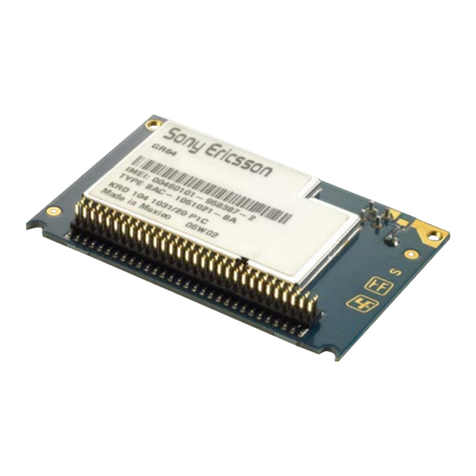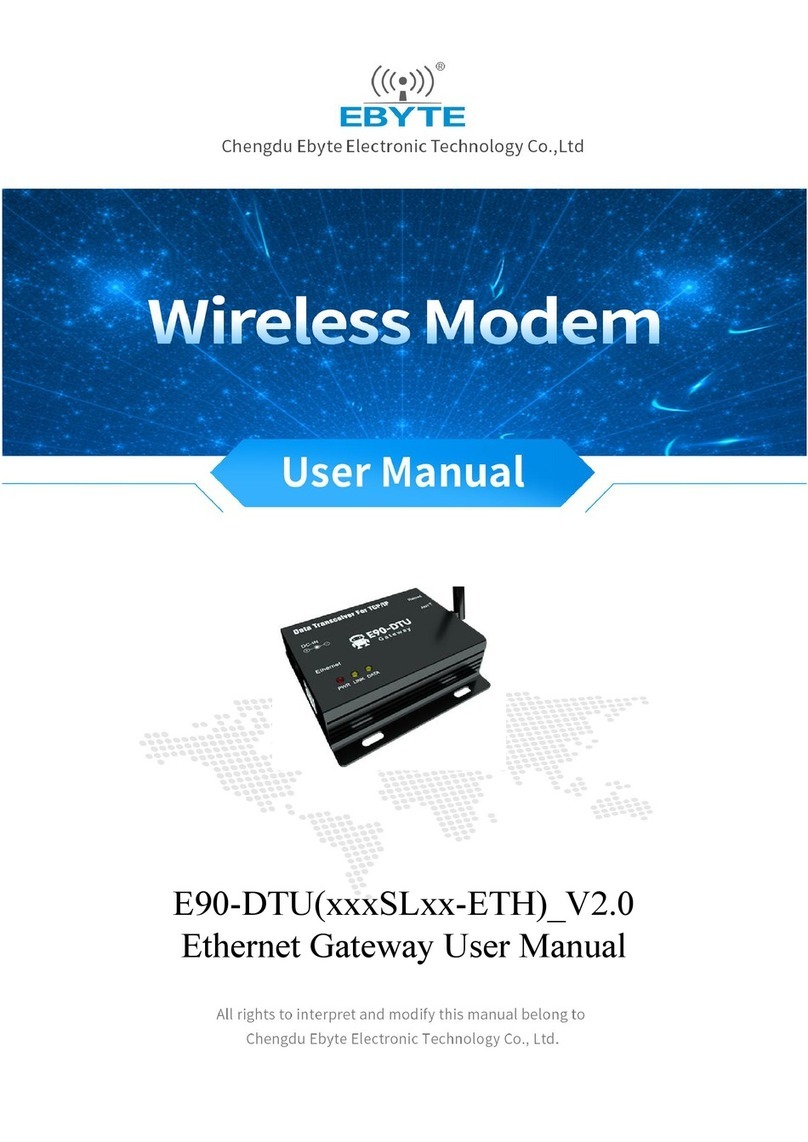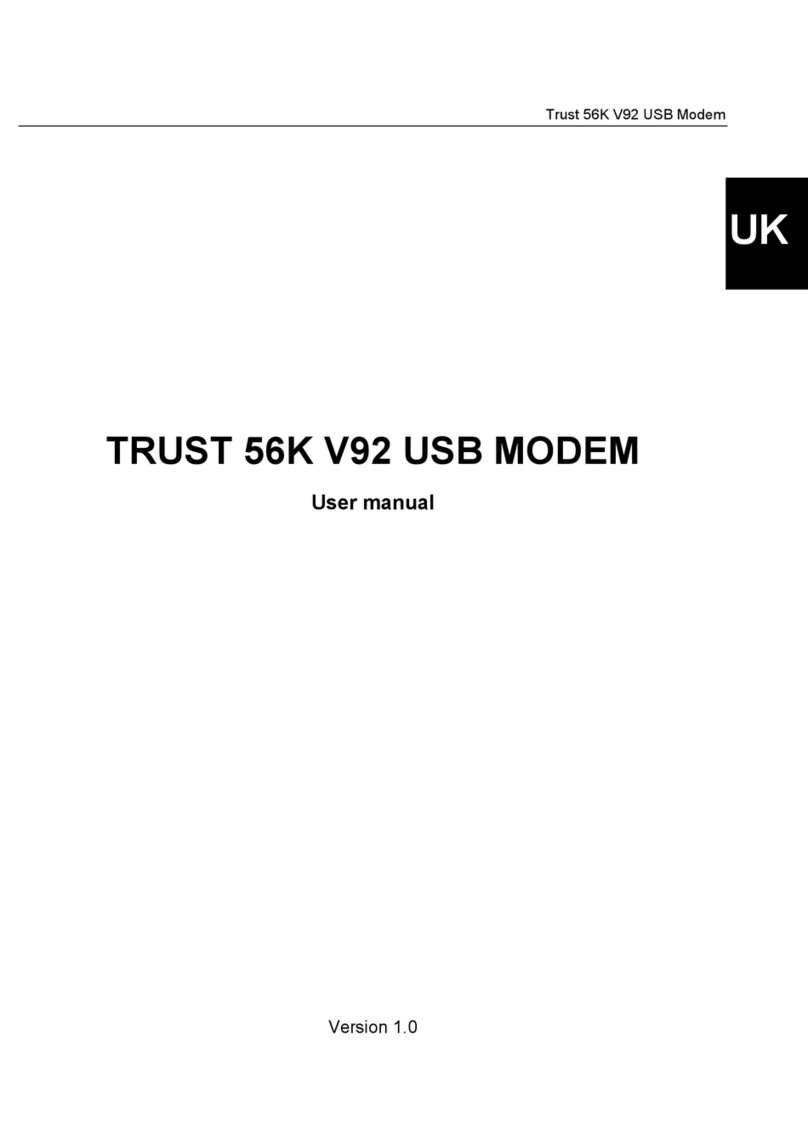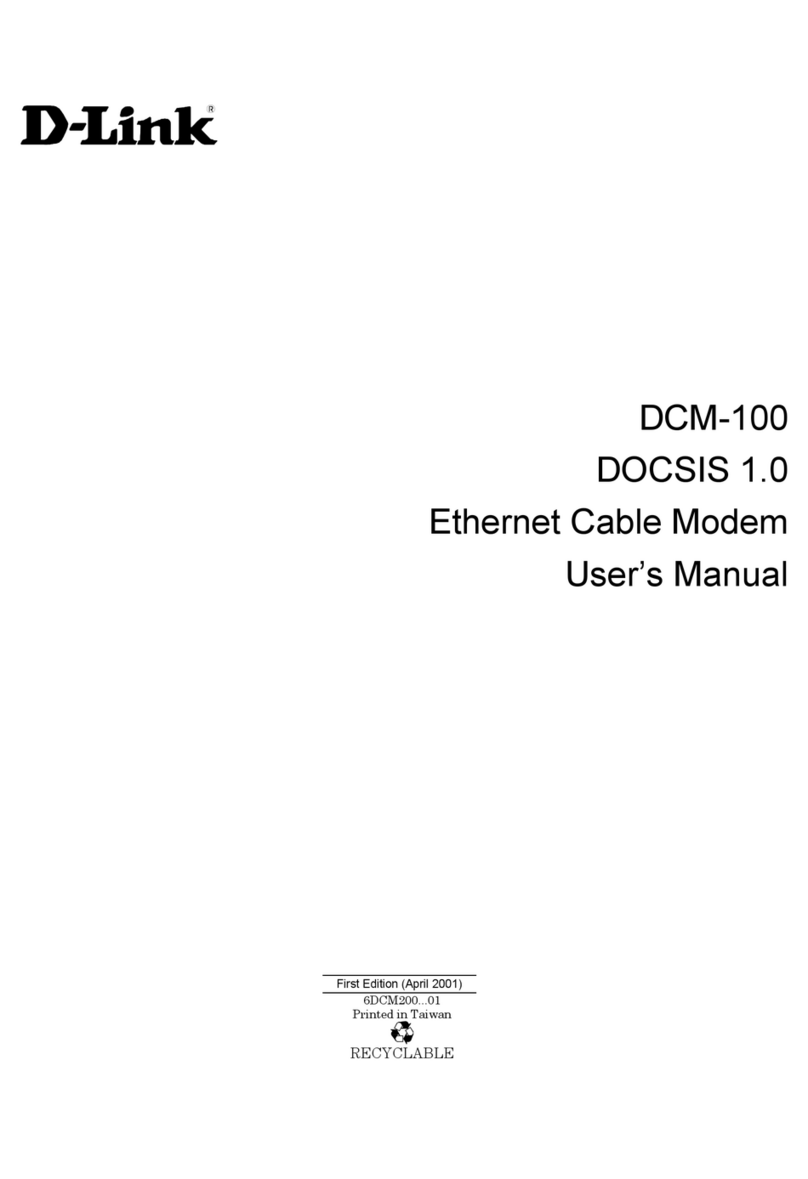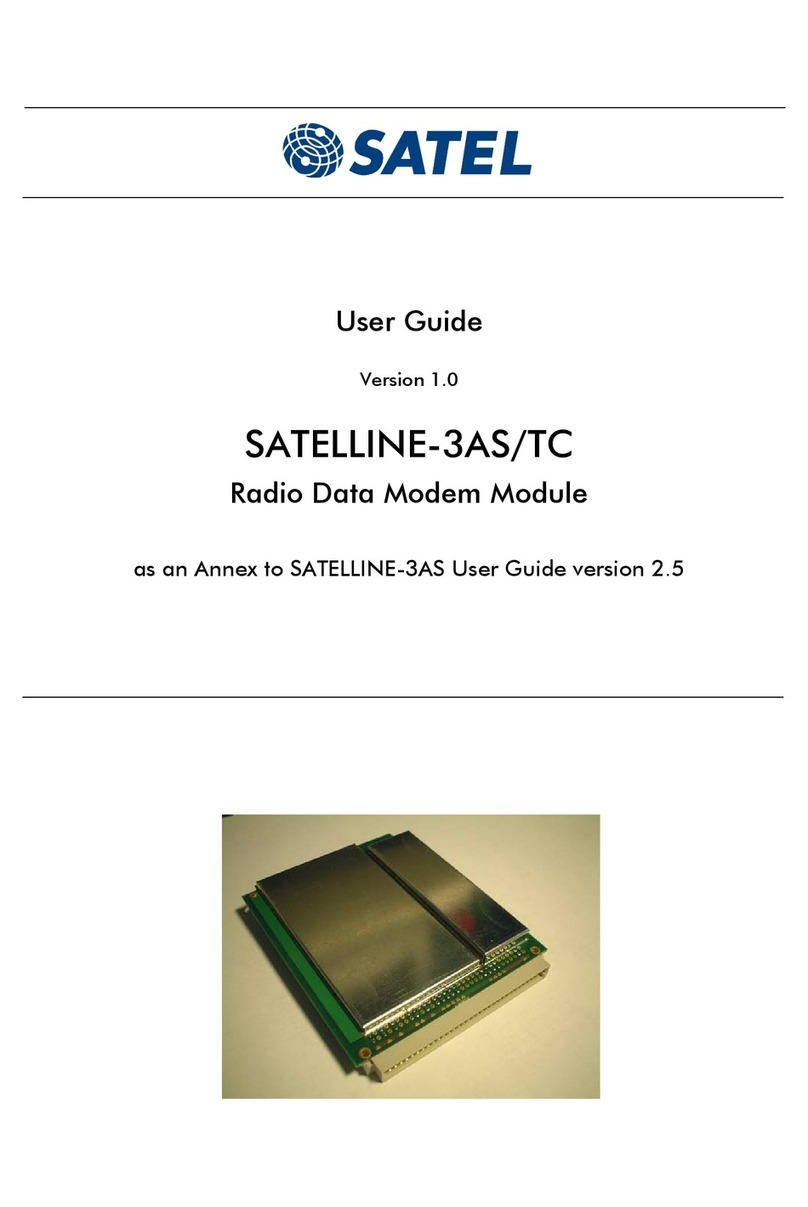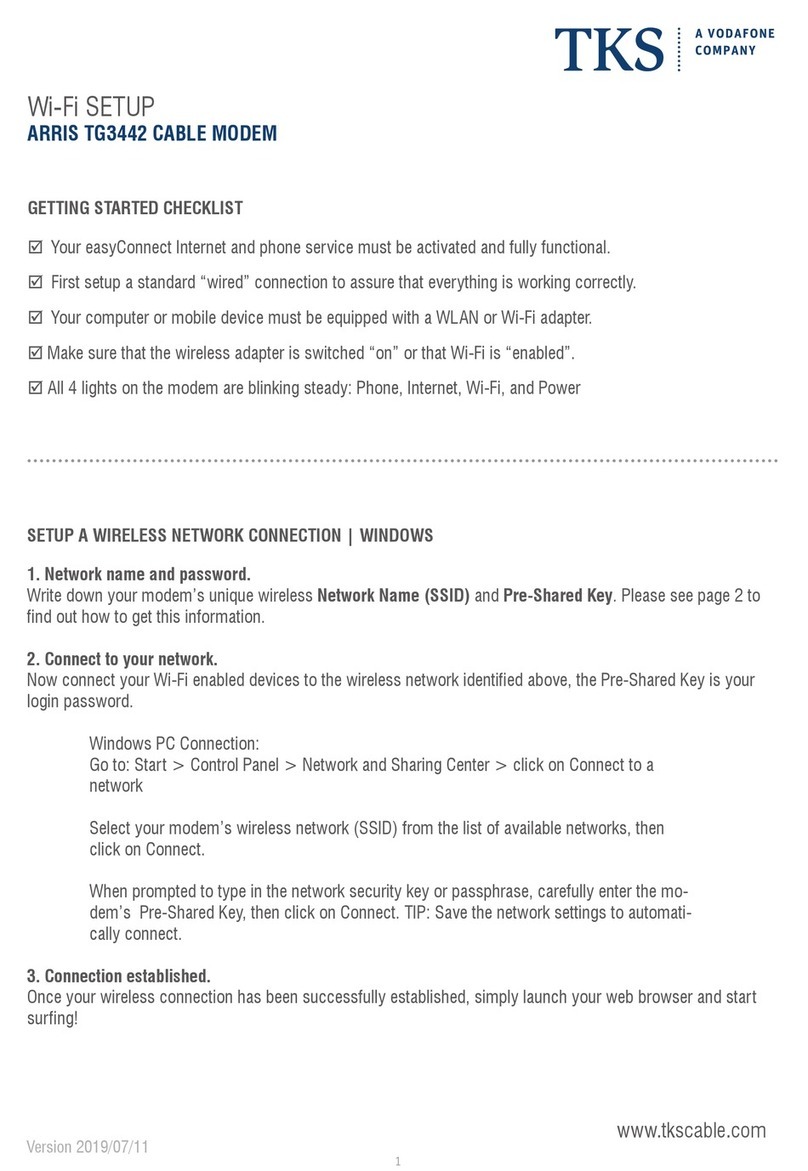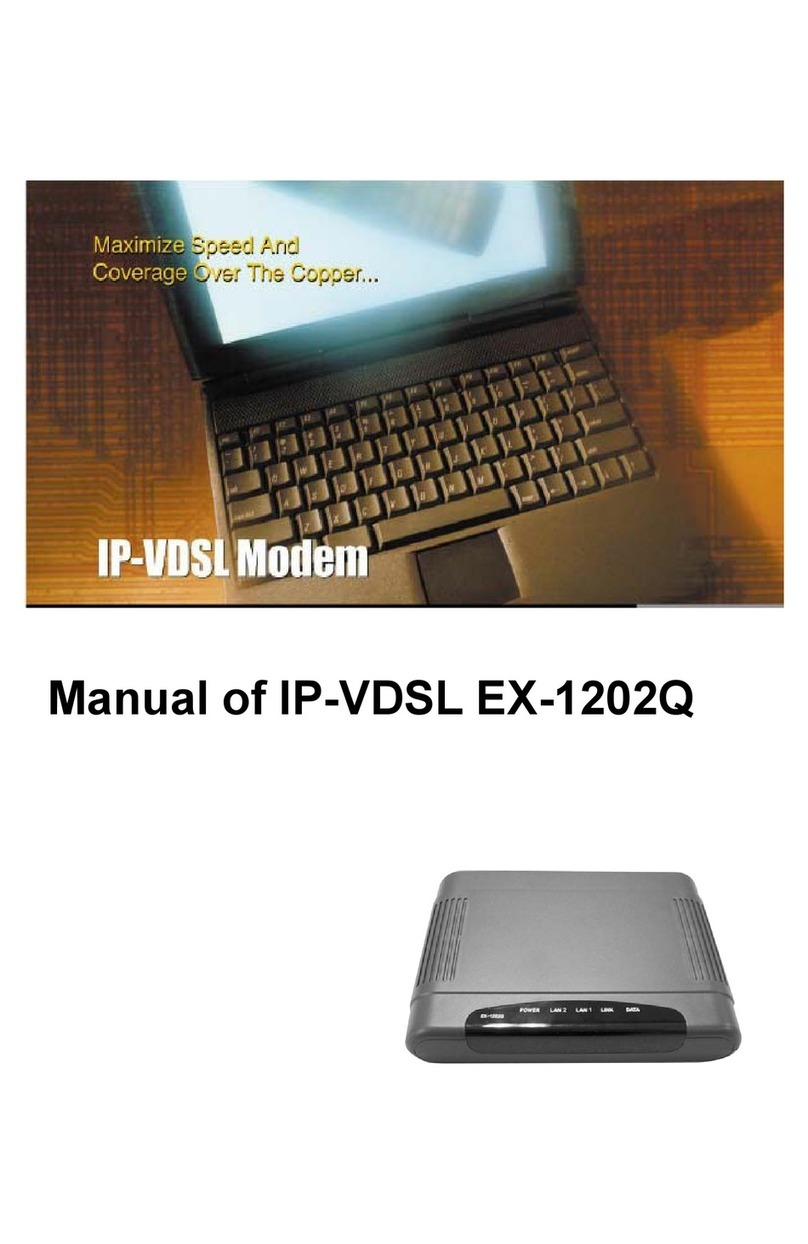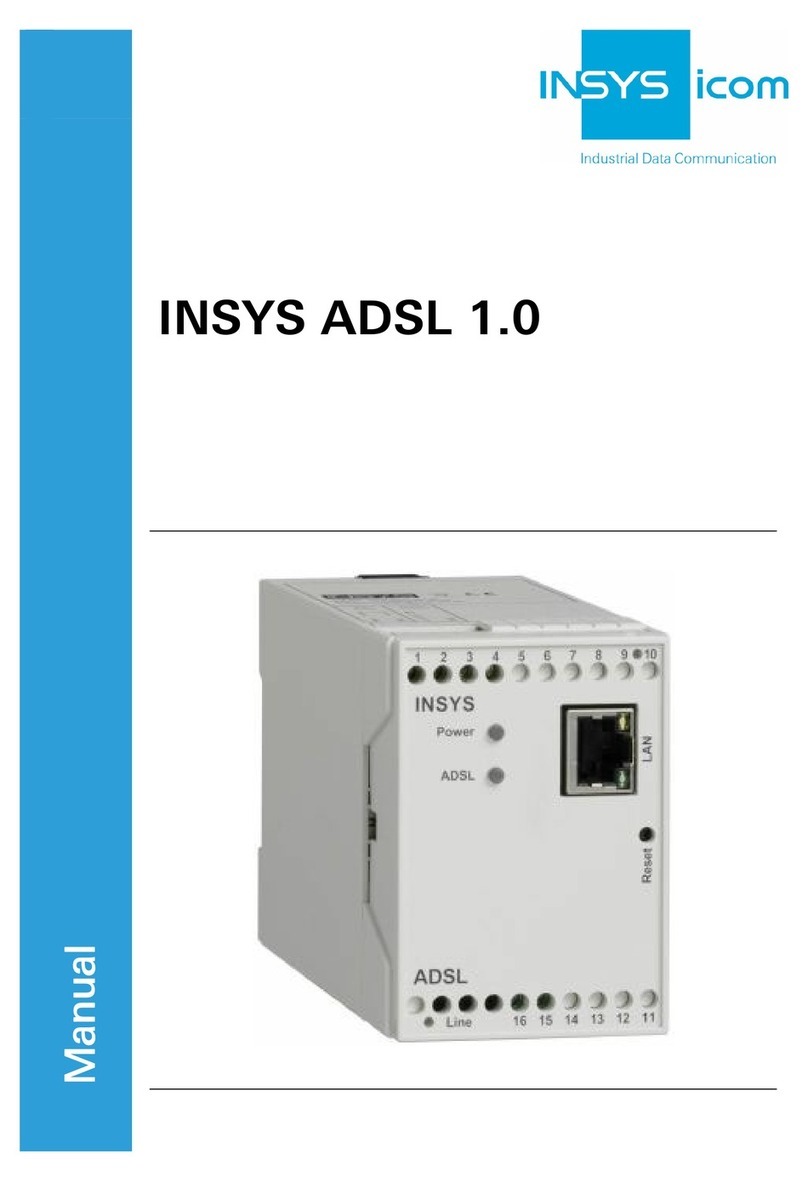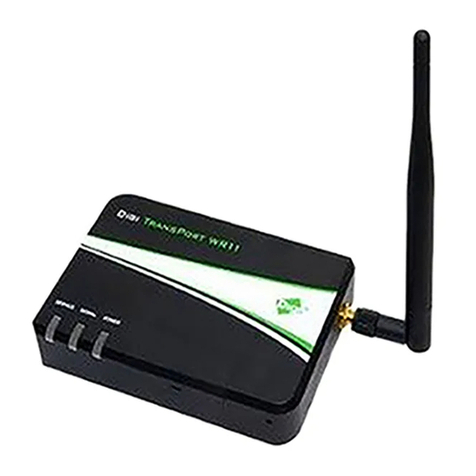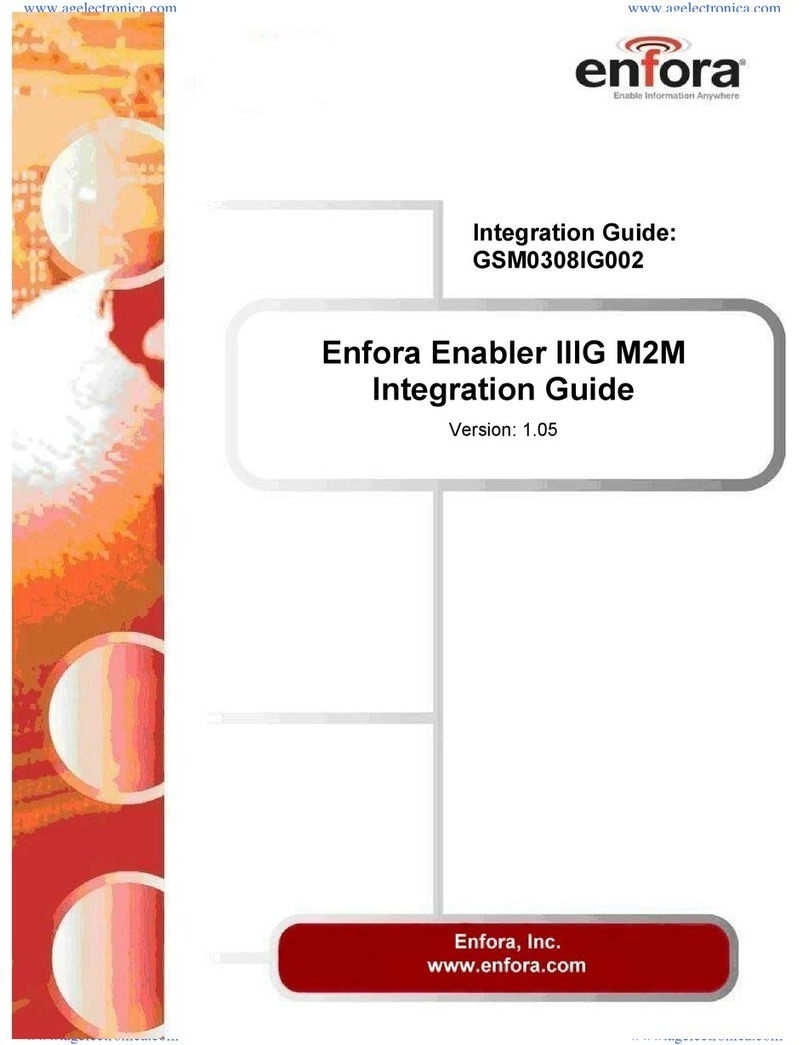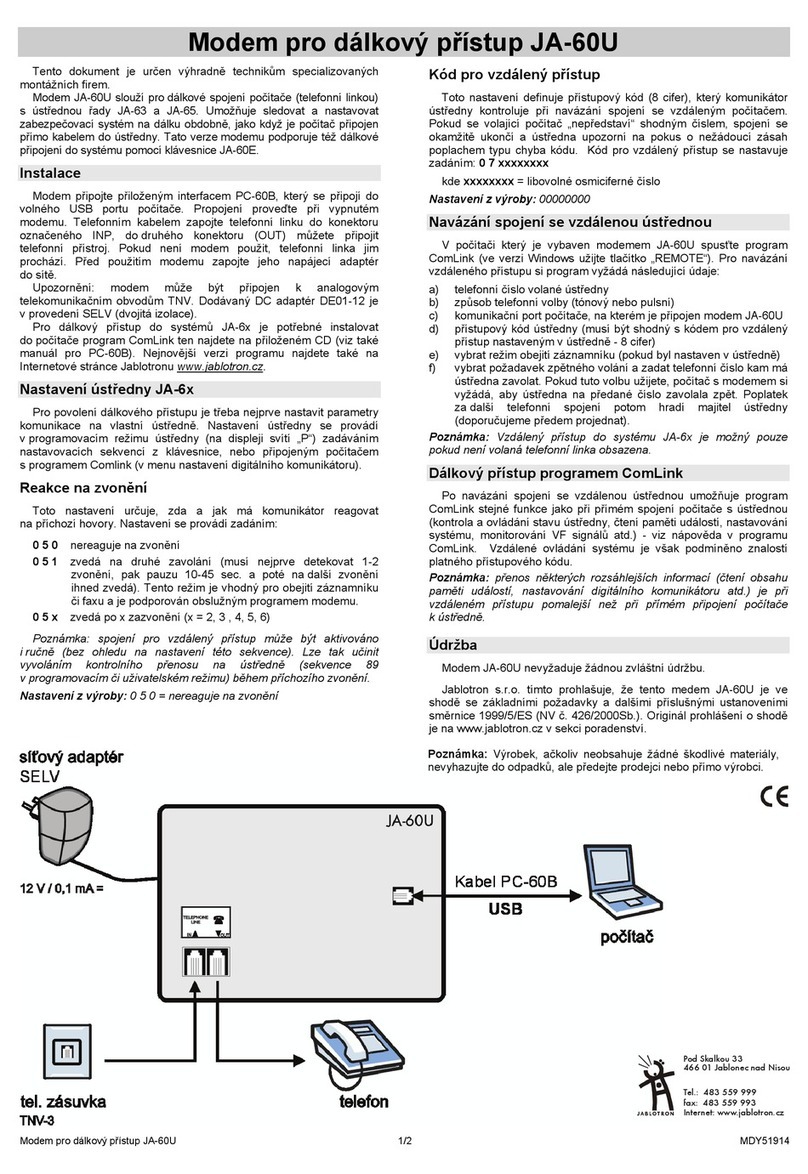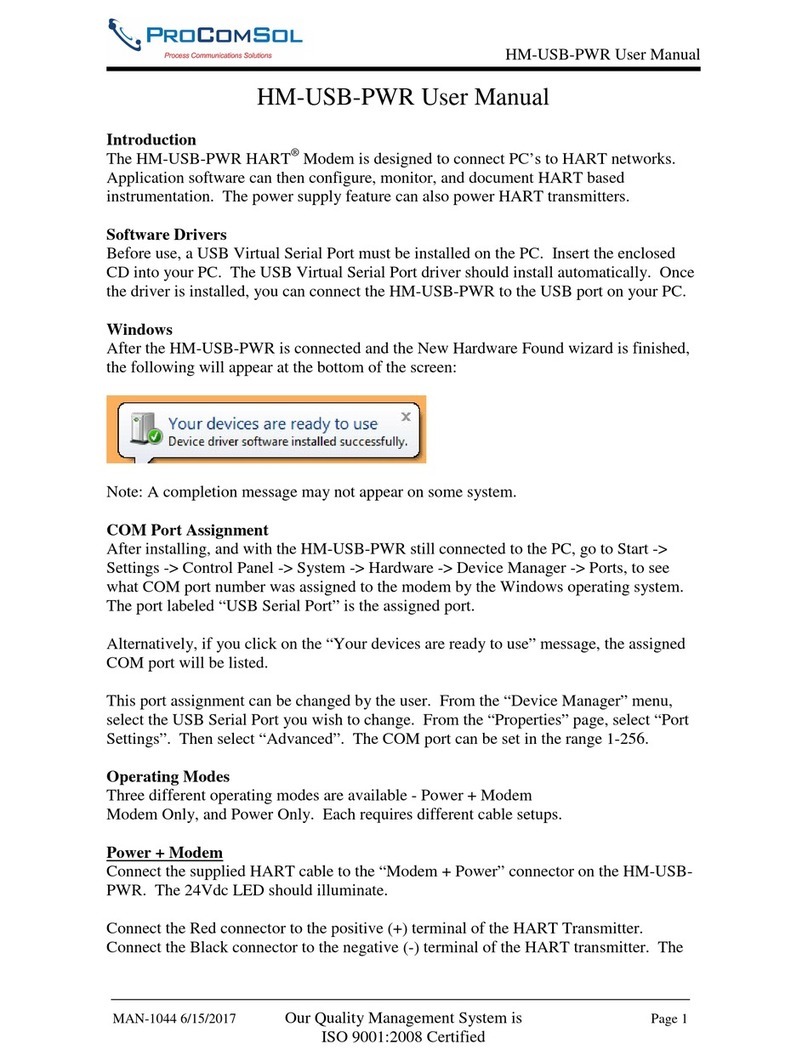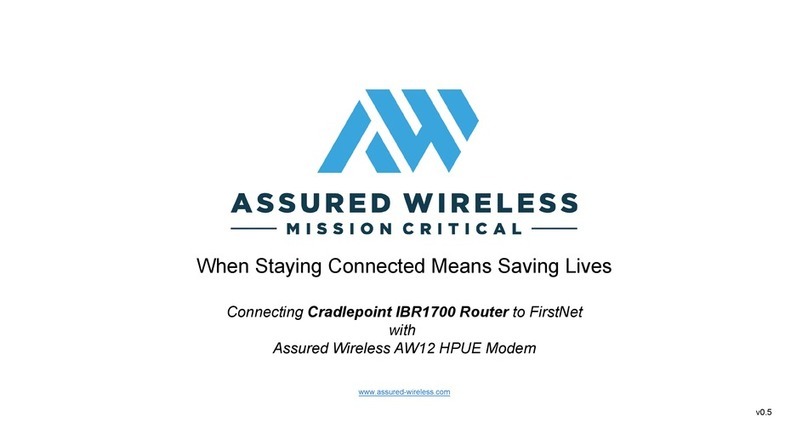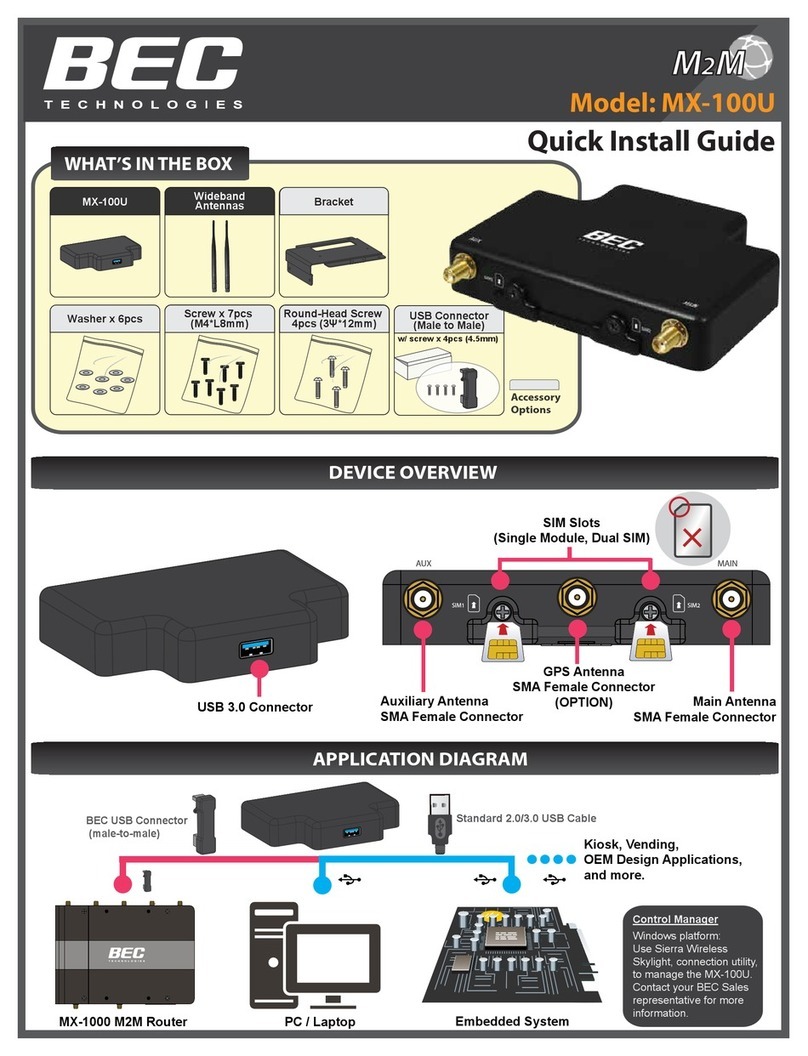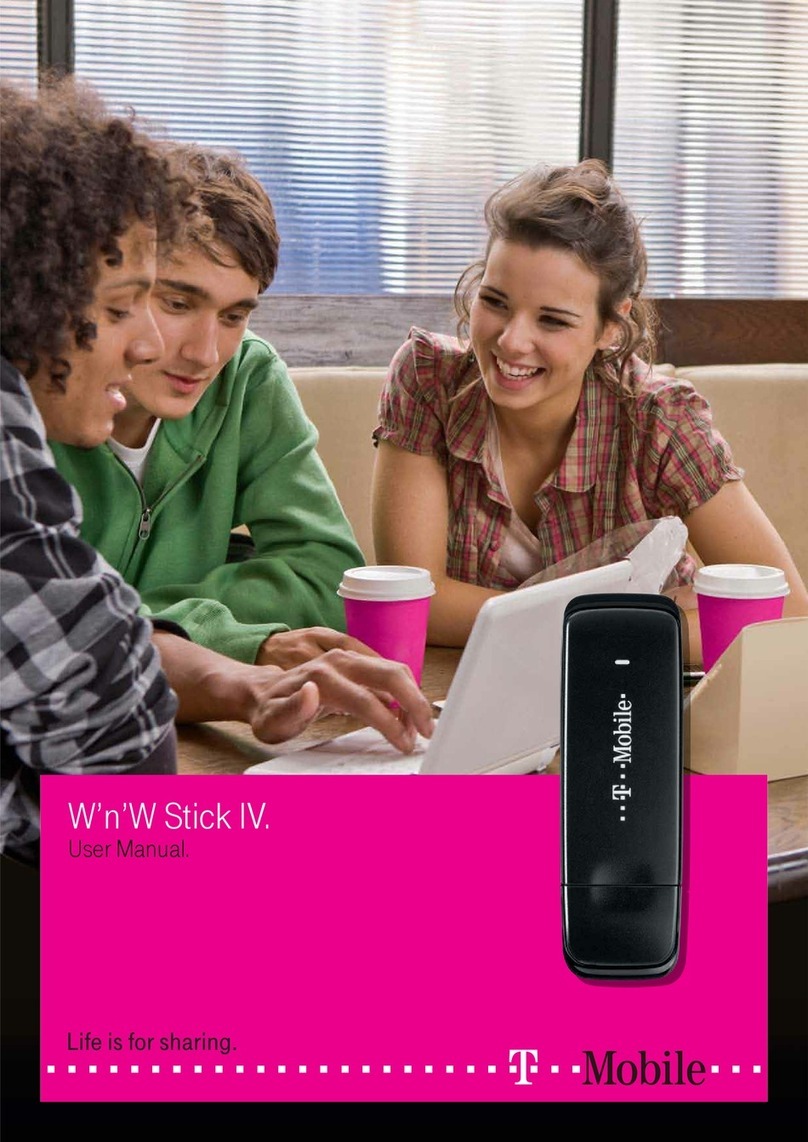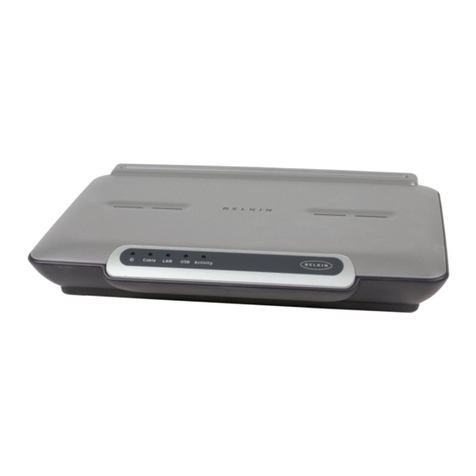adaptiveRF IPML-10 User manual

adaptiveRF
expertise in wireless design
2008 adaptiveRF Ltd Preliminary DS-IPML-10-1V0 Page 1
IMPL-10
Wireless IP Bridge
User Guide
June 2008

L-BAND OFDM IP BRIDGE
IPML-10
USER GUIDE
2008 adaptiveRF Ltd Preliminary DS-IPML-10-1V0Page 2
adaptiveRF
expertise in wireless design
Contents
Package Contents.................................................................................................................................................... 3
Introduction ............................................................................................................................................................... 3
Topologies Supported............................................................................................................................................. 4
1. Point to Point................................................................................................................................................ 4
2. Point to Multi-point .................................................................................................................................... 4
3. Repeater......................................................................................................................................................... 5
Features ...................................................................................................................................................................... 5
Description................................................................................................................................................................. 6
Power Management ............................................................................................................................................... 6
Physical....................................................................................................................................................................... 7
Front Panel ............................................................................................................................................................ 7
Front Panel LED Functions................................................................................................................................. 7
AC Adapter................................................................................................................................................................. 8
Rear Panel ............................................................................................................................................................. 8
Rear Panel Connections ................................................................................................................................ 8
Power Switch .................................................................................................................................................... 8
DC / In................................................................................................................................................................. 9
Aux Pwr Out ...................................................................................................................................................... 9
Ethernet .............................................................................................................................................................. 9
Configuration ...........................................................................................................................................................10
Delivery Settings .................................................................................................................................................10
Set-up Procedure................................................................................................................................................ 11
Installation of the configuration tool ...........................................................................................................12
Configuration Procedure..................................................................................................................................13
Security Settings .............................................................................................................................................14
Admin Password............................................................................................................................................14
Network Name...............................................................................................................................................14
Encryption Key ................................................................................................................................................14
Priority Settings...............................................................................................................................................15
Class of Service (CoS) Rules...........................................................................................................................15
Unit Priority......................................................................................................................................................15
Specifications...........................................................................................................................................................16
Channel Selection...................................................................................................................................................17

L-BAND OFDM IP BRIDGE
IPML-10
USER GUIDE
2008 adaptiveRF Ltd Preliminary DS-IPML-10-1V0Page 3
adaptiveRF
expertise in wireless design
Disclaimer
This User Guide is intended as an aid the user and as such the content is for information only.adaptiveRF
Ltd assumes no liability for any errors or inaccuracies it may contain. This document is subject to change
without prior notice.
Package Contents
The following items are included in the kit:
•IPML-10 OFDM Wireless IP Bridge (IP MODEM)
•Vertical Stand
•Universal Power Adaptor
•Right Angle 2dBi Diplole Antenna
•Ethernet Cable
•User Guide
Introduction
The adaptiveRF IPML-10 introduces new capabilities for simple and effective wireless data transmission and
streaming applications.
Although aimed at professional wireless streaming applications, theIPML-10 providesall the normal
networking features usually associated with a wired LAN.
Key features of the IPML-10 are:
•Units are completely portable and provide good throughput data rates close to range limit.
•All units are identical… each unit auto-configures to perform Master, Client and Repeater roles
•Plug and Play… units communicate on power-on. Simple configuration tool configures all
networked units at once for security purposes.
adaptiveRF Ltd can adapt the radio to provide customer specified frequencies and bandwidths.

L-BAND OFDM IP BRIDGE
IPML-10
USER GUIDE
2008 adaptiveRF Ltd Preliminary DS-IPML-10-1V0Page 4
adaptiveRF
expertise in wireless design
Topologies Supported
Three types of network topologies are supported without need for any administration from the
user.
1. Point to Point
Typical application:Relay bidirectional Ethernet traffic between points‘A’and Point ‘B’.
2. Point to Multi-point
Typical application: Unit A set as a fixed Master and connected to the wired network. Units B, C
and D at remote sites have PZT IP cameras attached.
A
B
C
D
A
B

L-BAND OFDM IP BRIDGE
IPML-10
USER GUIDE
2008 adaptiveRF Ltd Preliminary DS-IPML-10-1V0Page 5
adaptiveRF
expertise in wireless design
3. Repeater
Units E, Fand Gare out of wireless range with Units B, C and D. Unit Aacts as a repeater to complete the
wireless network.
Features
•Plug and Use Setup
•Long Range –>> 1km Line of sight (using suitable antennas)
•OFDM Modulation with real data throughput up to 20 Mbps (10MHz bandwidth)
•Powerful error correction provides maximum robustness in any environment
•IEE 802.3 10/100BASE-T Ethernet
•Integrated 802.1D Ethernet Bridge for Repeater coverage extension
•4 pre-programmed channel Frequencies (others on request)
•Programmable channel bandwidths (on request)
•Security using Network Name,Encryption Key -Hardware 168-bit 3DES Encryption
•Unit and Packet Prioritisation –802.1p, ToS
•Connected Link and Status LEDs
•Built-in Rechargeable Battery and charger for truly portable operation
•Auxiliary power output for external IP camera,router, or other equipment
A
D
C
B
E
F
G

L-BAND OFDM IP BRIDGE
IPML-10
USER GUIDE
2008 adaptiveRF Ltd Preliminary DS-IPML-10-1V0Page 6
adaptiveRF
expertise in wireless design
Description
The IPML-10 is an IP-based Wireless Bridge which provides a compact and portable solution to reliable
wireless networking. The IPML-10 is primarily designed for use with IP-based surveillance cameras but can
easily function to complement and complete IP networks.
The integrated rechargeable battery allows the IPML-10 to provide up to 2hrs of fully-portable usage.
Charge control is also integrated into the unit and the battery will automatically charge when the AC power
adapter is connected to the unit.
Using industry-recognised OFDM modulation the IPML-10 is ideal for operation in near and non-line-of-sight
environments.
The IPML-10 can be used in various size system configurations and is scalable from simple point to point
operation,to up to 31 units distributing data across multiple virtual networks.
Each unit is identical and upon power-up a Master unit is automatically assigned (Auto Master). If desired a
Fixed Master controller can also be manually assigned.
Power Management
A rechargeable nickel metal hydride (NiMh) battery is integrated into the unit. Charging and power
management is microprocessor controlled to ensure maximum battery life and efficient operation.
The battery charges If necessary when 12V dc is applied to the dc in connector. The current drawn by the
internal circuitry from the 12V supply is limited to 2A. This means that the battery will charge fastest when
the IPML-10 is switched off. Typical recharge time is 3 hours.
The battery warning LED beginsto flash when the battery needs recharging. If the battery becomes fully
discharged the unit switches off to prevent further discharge and damage to the battery. Re-connecting the
power resumesnormal operation and allows the battery to recharge. The battery warning LED will remain
on until the battery recovers to a sufficient level.
The charge LED will flash when the battery is being charged. The flash rate is proportional to the charging
current. Intelligent charge termination ensures the battery is safely charged at the maximum appropriate
rate. Once fully-charged the battery is kept in a top-off state. If the battery capacity is between 80 and 100%
the charge LED will be on.

L-BAND OFDM IP BRIDGE
IPML-10
USER GUIDE
2008 adaptiveRF Ltd Preliminary DS-IPML-10-1V0Page 7
adaptiveRF
expertise in wireless design
Physical
The IPM-10 is a compact unit which can be mounted both horizontally and vertically. A stand is provided for
mounting the unit vertically.
Dimensions L 209 x H 122 X W 43mm excluding SMA connector
Front Panel
The front panel provides status indication LEDs and an SMA RF Jack Socket for antenna connection.
Front Panel LED Functions
Name Function Description
battery Battery Low Flashing on = shutdown imminent… re-charge now
Solid on = shutdown… re-connect the power supply to recharge
charge Charge State Solid on = 80 –100% charged state
Flashing = charging (flash rate is proportional to charge rate)
hi pwr Transmit Power Indicates transmit high power (normal) mode
lan LAN Connected 10/100 ethernet connected. Flashes to indicate data
link Link State Radio link established (in full communication with other unit(s))
ch4 Selected Channel Solid on = ch4 selected
ch3 Selected Channel Solid on = ch3 selected
ch2 Selected Channel Solid on = ch2 selected
ch1 Selected Channel Solid on = ch1 selected
Flashing indicates radio fault
rf tx TX On/SYNC RF transmitter “on”. Strobing indicates synchronisation to the network

L-BAND OFDM IP BRIDGE
IPML-10
USER GUIDE
2008 adaptiveRF Ltd Preliminary DS-IPML-10-1V0Page 8
adaptiveRF
expertise in wireless design
AC Adapter
The IPML-10 is supplied with a universal AC power adapter suitable for supplying power for the unit and
charging the battery. An IEC type connector allows a country specific mains lead to be used.
Rear Panel
Rear Panel Connections
Connector Description
dc / in 12Vdc (2A Max)
aux pwr out +5v dc @1A (max) for external camera etc
ethernet 10/100 Ethernet port
on/off on/off power switch
Power Switch
Off + AC Adapter connected:
The IPML-10 is switched off. The battery will charge if necessary.
Off + AC Adapter not connected:
The IPML-10 is switched off.
On + AC Adapter connected:
The IPML-10 is switched on, regardless of the battery condition. The battery will charge if necessary.
On + AC Adapter not connected:
The IPML-10 is switched on if the battery is sufficiently charged.

L-BAND OFDM IP BRIDGE
IPML-10
USER GUIDE
2008 adaptiveRF Ltd Preliminary DS-IPML-10-1V0Page 9
adaptiveRF
expertise in wireless design
DC / In
The DC in connector is a Din 6 way type socket. The pinoutsare shown below:
Aux Pwr Out
An auxiliary power output is available for powering such things as IP cameras, hubs and routers. This
output provides+5V dc at up to 800mA. The output is via a USB type ’B’ connector.
The auxiliary supply is by default internally generated and actively controlled with the on / off switch. In this
case the supply is also active when running from the internal battery.
The supply can optionally be through fed from the supplied external power adapter by repositioning an
internal link. In this case the supply is only available when the external adapter is plugged in, but an
increased output current of 2A is available.
Ethernet
The RJ45 Ethernet connection provides 10/100 Ethernet Port for data transport and administration purposes.
Although 10Mbit Ethernet connections are also supported, connections of this type will limit the maximum
data throughput.
Pinouts Viewed From Rear
Pin 1 N/C
Pin 2 N/C
Pin 3 +12V in
Pin 4 +12V in
Pin 5 GND
Pin 6 GND
Pin 7 GND
1
2
3
4
5
6
7
Pin-Outs
Pin 1 +5V
Pin 2 N/C
Pin 3 N/C
Pin 4 GND
Auxiliary Power Connector
–
viewed from rear of IPML
-
10
Pin
-
out for the Aux power pins is the same as
a
standard USB B type connector.
A suitable mating connector is the Assmann A-USBPB-R available from Digikey (AF1078-ND)

L-BAND OFDM IP BRIDGE
IPML-10
USER GUIDE
2008 adaptiveRF Ltd Preliminary DS-IPML-10-1V0Page 10
adaptiveRF
expertise in wireless design
Configuration
IPML-10 units set in the delivery state are Plug and play: i.e. on power-up they can communicate with each
other. The only required user settings are for security purposes:
•To prevent reconfiguration of the units by assigning anAdmin Password
•To isolate different networks from each other using aNetwork Name
•To encrypt the data in each network using an Encryption Key
Only units with same Network Name and Encryption Key can communicate with each other.
Delivery Settings
The following are the delivery settings for the IPML-10:
Setting Value Comment
Password adaptiveRF Configuration password
Network Name adaptiveRF Case Sensitive should be set for security
Encryption off/no key Should be set for security purposes
Unit Priority 2All units have equal priority
Packet Prioritisation none All serviceshave equal priority
IPML-10s are configured using the provided Windows™ configuration utility. This provides a means of
setting up the Network Name, Encryption Key and Priority Settings.
The units may be configured individually or together when in the same network. Once anetwork of devices
has been created, new IPML-10s can only be added to an existing network by running the tool locally via the
on the units’ wired Ethernet port, or resetting the whole network to its delivery state, then re-configuring the
network.

L-BAND OFDM IP BRIDGE
IPML-10
USER GUIDE
2008 adaptiveRF Ltd Preliminary DS-IPML-10-1V0Page 11
adaptiveRF
expertise in wireless design
Set-up Procedure
Each IPML-10 must have the same Network Name if it is to communicate on the same network. IPML-10s
with different network IDs can not communicate with each other. Co-located units on the same RF channel
will lock to each other for synchronisation purposes, but will not communicate although their bandwidths
will be shared.
It is suggested to follow the following procedure in order to prepare the units for first use:
•Unpack and check all contents present.
•Connect antenna or 50 Ohm load to antenna port.
•Ensure unit under test on/off switch is in the ‘off’ position.
•Connect mains adapter. (Unit may start to charge).
•Connect Ethernet cable between unit under test and P.C / router / hub.
•Install the configuration tool and WinPcap.
•Switch on the IPML-10 units to be configured in the same network.
•Run the configuration tool to set the parameters for the IMPL-10 network.
•Verify operation.
•Use the configuration tool to modify priority settings if required.
•Verify operation.
Please note that in addition to a maximum wireless range,that there is also a minimum distance allowed
between each unit,which is dependent upon antenna types used. This is only likely to be an issue during
configuration,or when the units are in close proximity (<10M). If operating the units in close proximity then it
is advised to fit 20dB attenuators in-line with the antenna.
Set-up for configuring IPML-10 Units

L-BAND OFDM IP BRIDGE
IPML-10
USER GUIDE
2008 adaptiveRF Ltd Preliminary DS-IPML-10-1V0Page 12
adaptiveRF
expertise in wireless design
Installation of the configuration tool
Insert the IPML-10 CD into one of the CD-ROM drives on the computer connected to your router.
The CD should start automatically. If the installation menu doe s not appear, or you are installing
from another location,browse the installation folder and run the autorun.exe file
Install the IPML-10 Configurator and WinPcap from the launcher.
Run the IPML-10 Configuration Tool. The tool should look similar to this;

L-BAND OFDM IP BRIDGE
IPML-10
USER GUIDE
2008 adaptiveRF Ltd Preliminary DS-IPML-10-1V0Page 13
adaptiveRF
expertise in wireless design
Configuration Procedure
Although in their default configuration the IPML-10 units are ‘plug and use’, it is advisable to change the
default security settings.
Ensure that all IPML-10s to be configured are switched on and that the blue link LEDs are on.
Click on the “Locate IPML-10s” button to find the IPML-10 units in your network. Enter the Admin Password for
the local IPML-10 when requested. The delivery Admin Password has been set to “adaptiveRF”
Please note the following important rules:
1. The MAC addresses of all units which are in wireless range of the local (L) IPML-10 will be found.
2. Modifications can only be made to those units which share the same Network Name and Encryption
Key.
3. Block modifications can only be made to units which share the same Admin Password.
4. If the same modifications are being made to units individually, then modify the Local (-L) listed unit last,
otherwise certain modifications to the local unit can cause the connection to fail.
5. Units with identical network names but different encryption keys will indicate link connected, but will not
be able to communicate.
6. If you forget the Admin Password, the unit will need to be returned for re-programming.
Providing the units are in the delivery state,they will communicate with each other and can be block
modified.

L-BAND OFDM IP BRIDGE
IPML-10
USER GUIDE
2008 adaptiveRF Ltd Preliminary DS-IPML-10-1V0Page 14
adaptiveRF
expertise in wireless design
Security Settings
Admin Password
The Admin Password prevents unauthorised changes to be made to each IMPL-10. Setting a common
Admin Password for each network allows block functions to be used. Change the Admin Password as
follows:
•Select all the IPML-10 units to which the modifications should be applied.
•Enter the new Admin Password into the “New Password”text box.
•Click the “Modify Selected” button to make the action the change, or wait until all desired changes
have been made.
Network Name
The Network Name isolates different groups of IMPL-10 from one another. Units with different network
names cannot communicate with each other, but may share the same bandwidth and act as repeaters for
other networks on the same RF channel.Change the Network Name as follows:
•Select all the IPML-10 units to which the modifications should be applied.
•Enter the new Network Nameinto the “Network Name”text box. (Max 20 Alpha-Numeric
characters)
•Click the “Modify Selected” button to make the action the change, or wait until all desired changes
have been made.
Encryption Key
The Encryption Key together with the Network Name is used for the hardware based 3DES encryption
engine. When an Encryption Key is set, all wireless payload data is 3DES encrypted. Only IPLM-10 units
using the same Encryption Key are able to decrypt the data. This makes for a very secure link. (3DES data
encryption is defined in ANSI X9.5). Set the Encryption Key as follows:
•Select all the IPML-10 units to which the modifications should be applied.
•Enter the new encryption key into the “Encryption Key” text box. (Max 24 Alpha-Numeric characters)
•Click the “Modify Selected” button to make the action the change, or wait until all desired changes
have been made.
Note: A Blank Encryption entry disables Encryption. Try to choose encryption keys which are difficult to guess
and longer than 6 characters.

L-BAND OFDM IP BRIDGE
IPML-10
USER GUIDE
2008 adaptiveRF Ltd Preliminary DS-IPML-10-1V0Page 15
adaptiveRF
expertise in wireless design
Priority Settings
Class of Service (CoS) Rules
This allows the selection of 2 rules for classification of different traffic types. Currently it is possible to
prioritise traffic based on UDP, TCP and 802.1p. Rule 0 has a higher priority than Rule 1. If neither of the
rules is matched, then the value set in the Unit Priority field will be used. The CoS Rules are set as follows:
•Select the IPML-10 units to which the modifications should be applied.
•Use the “CoS Rule n”drop-down control to set the desired traffic classification.
•Click the “Modify Selected” button to make the action the change, or wait until all desired changes
have been made.
Unit Priority
Unit Priority allows 7 different priorities (0 to 6) to be set for traffic transmitted by each IPML-10 unit over the
wireless link. Units with a numerically lower Unit Priority setting have a higher priority for transmission than
units with a numerically higher setting. The Unit Priority value can be changed as follows:
•Select all the IPML-10 units to which the modifications should be applied.
•Use the “Unit Priority” drop-down control to set the desired Unit Priority.
•Click the “Modify Selected” button to make the action the change, or wait until all desired changes
have been made.

L-BAND OFDM IP BRIDGE
IPML-10
USER GUIDE
2008 adaptiveRF Ltd Preliminary DS-IPML-10-1V0Page 16
adaptiveRF
expertise in wireless design
Specifications
Ethernet Port
Connector: RJ-45 X 1
Standards supported: IEEE 802.3, IEEE 802.3u
10/100 BaseT Auto-sense and MDI/MDX support
Modulations
Radio
OFDM, 512 Carriers (10MHz B/W)
Flexible frequency configuration
Throughput with TCPIP data: up to 20Mbps
Data Rate
Security
Configuration Password
Network Name
Mixed DES/3DES Encryption
Network Protocols
Supported Protocols
IEE 802.1D Spanning Tree Protocol (STP)
802.1Q VLAN
Quality of Service (QoS)
Environmental
Operating temperature 10 ~ 40 degrees Celsius
Relative humidity 0 ~ 90% (non-condensing)
Dimensions
Note: Specifications are subject to change without notice.
Parameter MIN TYP MAX UNITS NOTES
RF operating frequency range 1200 1400 MHz see default freq table
Modulation b/w 10 MHz
TX o/p power 250 mW
Rx Sensitivity -82 dBm to maintain sync
LOS range 1km with dipole antennas
Operating Voltage 10 12 14 Volts (dc)
Operating Current 1000 1900 mA current limited depends
on charge state
Aux power output current @5V 1000 mA
Spurious Emissions RF Port -57 dBm
Frequency Stability +/-2.5 ppm (-10 to +40ªC)
Operating Temperature +10 +40 ªC
Weight 1.5 Kg with rechargeable
batteries
Dimensions W = 44 L = 208 H =122 mm excluding length of SMA
connectors

L-BAND OFDM IP BRIDGE
IPML-10
USER GUIDE
2008 adaptiveRF Ltd Preliminary DS-IPML-10-1V0Page 17
adaptiveRF
expertise in wireless design
Approvals
Approval pending to ETSI EN 300 440-1
Channel Selection
The units are shipped with a 1394MHz Dipole antenna which is suitable for use on channel 1.
It is also possible to select an additional 3 pre-programmed channels. If operation on channels 2, 3 or 4 is
required an alternative antenna must be used.
Please contact adaptiveRF Ltd with your frequency requirements and for further information.
Note:
A
ny 4 channel frequencies in the 1200
-
1400MHz
range can be programmed on request.
Table of contents
